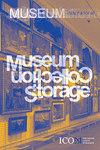具象认知与数字博物馆体验的局限
IF 0.4
4区 艺术学
0 ART
引用次数: 0
摘要
参观博物馆是一件生活大事,它可以带来一系列数字产品无法复制的体验。博物馆的地形在我们与它们的接触中显露出来。我们获得的知识与物理位置和事物有关,以场景的形式存储,并以整个事件的形式记录。具体和情境认知的背景为体验现实生活中的博物馆空间提供了一个强有力的、发人深省的论据。具身认知理论认为,对我们身体的限制使用可能会导致认知形式的深刻改变和限制。在线互动越来越多地迫使我们进入依赖于眼睛吸收模仿语言的思维模式。非线性事件和现实生活经验的挂毯被“眼屏幕认知”、空间惰性和与最有可能在我们的认知过程中发挥关键作用的模式的脱节所取代。在不否认在线存在的明显好处的情况下,比如接触新的受众和连接数据库,从而创造新的研究机会,我想用具体的具体化经验理论和我自己的生活经验中的例子来论证亲自参观博物馆的情况。具身认知理论指出,我们作为具身行动者进行思考,并依靠感觉输入来支持我们对概念的理解、形成和保留。博物馆环境中的具身认知可以帮助我们更好地理解和欣赏我们感知过程的范围和复杂性,影响事件的意义和我们生活经验的丰富性。本文章由计算机程序翻译,如有差异,请以英文原文为准。
Embodied Cognition and the Limits of Digital Museum Experience
Abstract A museum visit is a life event, which can result in an array of experiences that its digital counterparts are not able to reproduce. Museum topographies reveal themselves through our encounters with them. The knowledge we gain is connected to physical locations and things, stored as scenarios and registered as whole events. The context of embodied and situated cognition provides a strong and thought-provoking argument for experiencing real-life museum spaces. What embodied cognition theories suggest is that the restricted use of our bodies might result in profoundly altered, limited forms of cognition. Online interactions increasingly force us into modes of thinking which rely on eye-based absorption of the mimetic language. The non-linear events and tapestries of real-life experience are replaced by ‘eye-screen cognition’, spatial inertness and disconnection from the modes which most likely play a crucial role in our cognitive processes. Without dismissing the obvious benefits of online presence, like reaching new audiences and connecting databases and thus creating new research opportunities, I would like to argue the case for the in-person museum visit, using specifically the theories of embodied experience and examples from my own lived experience. Embodied cognition theories indicate that we think as embodied agents, and depend on sensorial input to support our understanding, formation and retention of concepts. Embodied cognition in the museum context can help us better understand and appreciate the spectrum and complexity of our perception processes, the meaning of an impactful event and the richness of our living experience.
求助全文
通过发布文献求助,成功后即可免费获取论文全文。
去求助
来源期刊

MUSEUM INTERNATIONAL
ART-
CiteScore
0.60
自引率
0.00%
发文量
0
期刊介绍:
In its new revised form Museum International is a forum for intellectually rigorous discussion of the ethics and practices of museums and heritage organizations. The journal aims to foster dialogue between research in the social sciences and political decision-making in a changing cultural environment. International in scope and cross-disciplinary in approach Museum International brings social-scientific information and methodology to debates around museums and heritage, and offers recommendations on national and international cultural policies.
 求助内容:
求助内容: 应助结果提醒方式:
应助结果提醒方式:


